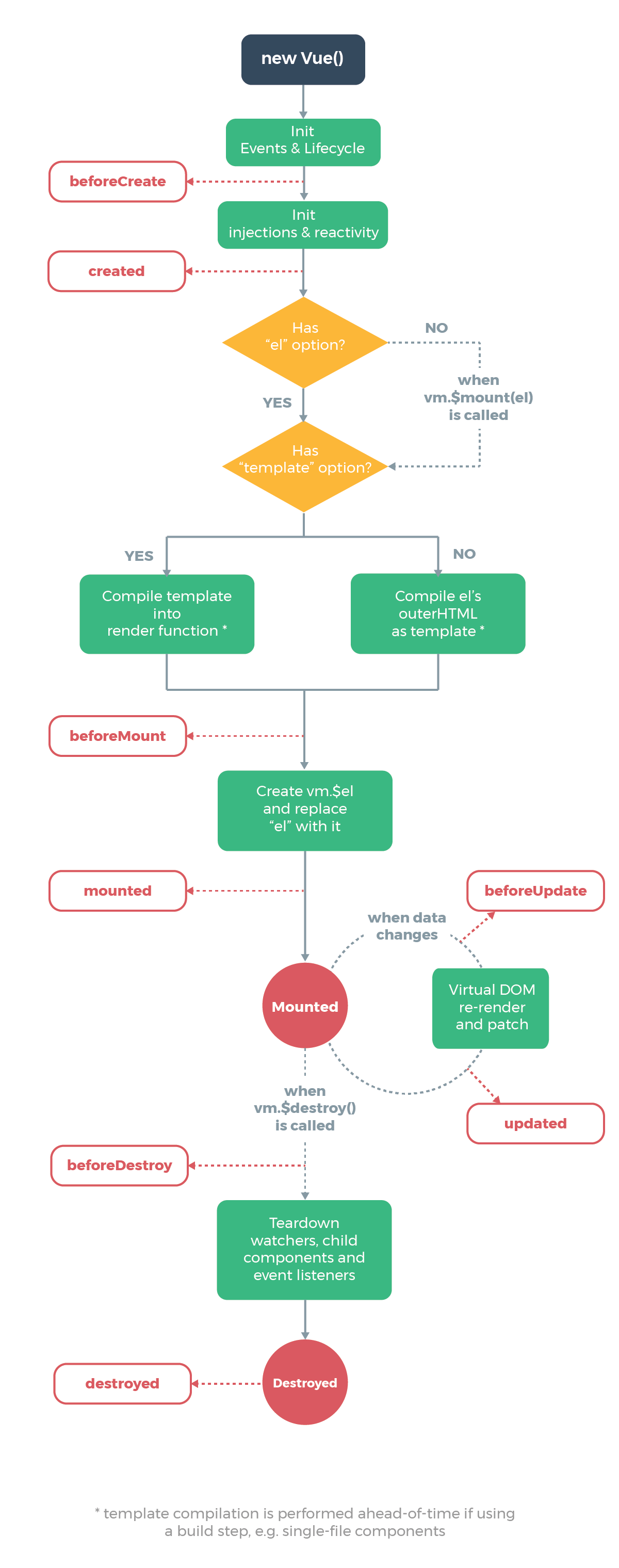vue是一个灵活渐进的mvvm框架,其实际内容可以用 UI=f(State)这个公式来表示。
今天第一篇关于vue的剖析,从其实例化的过程来展开。
vue实例化
vue核心是声明式渲染,其初始化的实例为后面的过程准备了各种条件,看下面一段简单的vue例子:
|
|
第一段代码是要初始化的template,第二段是实例的真正初始化内容,最终template会被渲染成Hello Vue!;
那当执行new Vue(options)时里面到底执行了什么?
实例化流程
实际new Vue(options)是调用了Vue.prototype._init方法:
主要流程有:
merge options
第一个流程先简单剖析下,流程过程主要是初始化实例vm的$options, 把构造函数Vue.options({components:..., directives:..., filters:..., _base:...})和options合并赋值给vm.$options;
|
|
设置代理initProxy(vm)
初始化声明周期initLifecycle(vm)
主要是初始化与vm声明周期有关的值
|
|
initEvents(vm)
初始化事件属性:
|
|
initRender(vm)
初始化render的时候需要的一些属性:
|
|
callHook(vm, ‘beforeCreate’)
调用‘beforeCreate’的hook函数var handlers = vm.$options[hook];
initInjections(vm)
对vm.$options中的injections处理
initState(vm)
这个过程非常重要,里面吹了props/methods/data/computed等数据并初始化了依赖、watchers、deps等,是整个vm实例能够渲染并且监听数据变化的关键;
|
|
initProvide(vm)
var provide = vm.$options.provide;
callHook(vm, ‘created’)
调用‘created’的hook函数var handlers = vm.$options[hook];
vm.$mount(vm.$options.el)
这个是初始化vue实例的最后一步,把虚拟dom挂载到option.el(即’#app’)中;
以上就是vue实例化的所有流程,本文并没有介绍各个流程的详细处理过程,在后续文章中会一一展开。
vue实例生命周期
从上面流程中,其实可以看出一些实例生命周期的过程:
